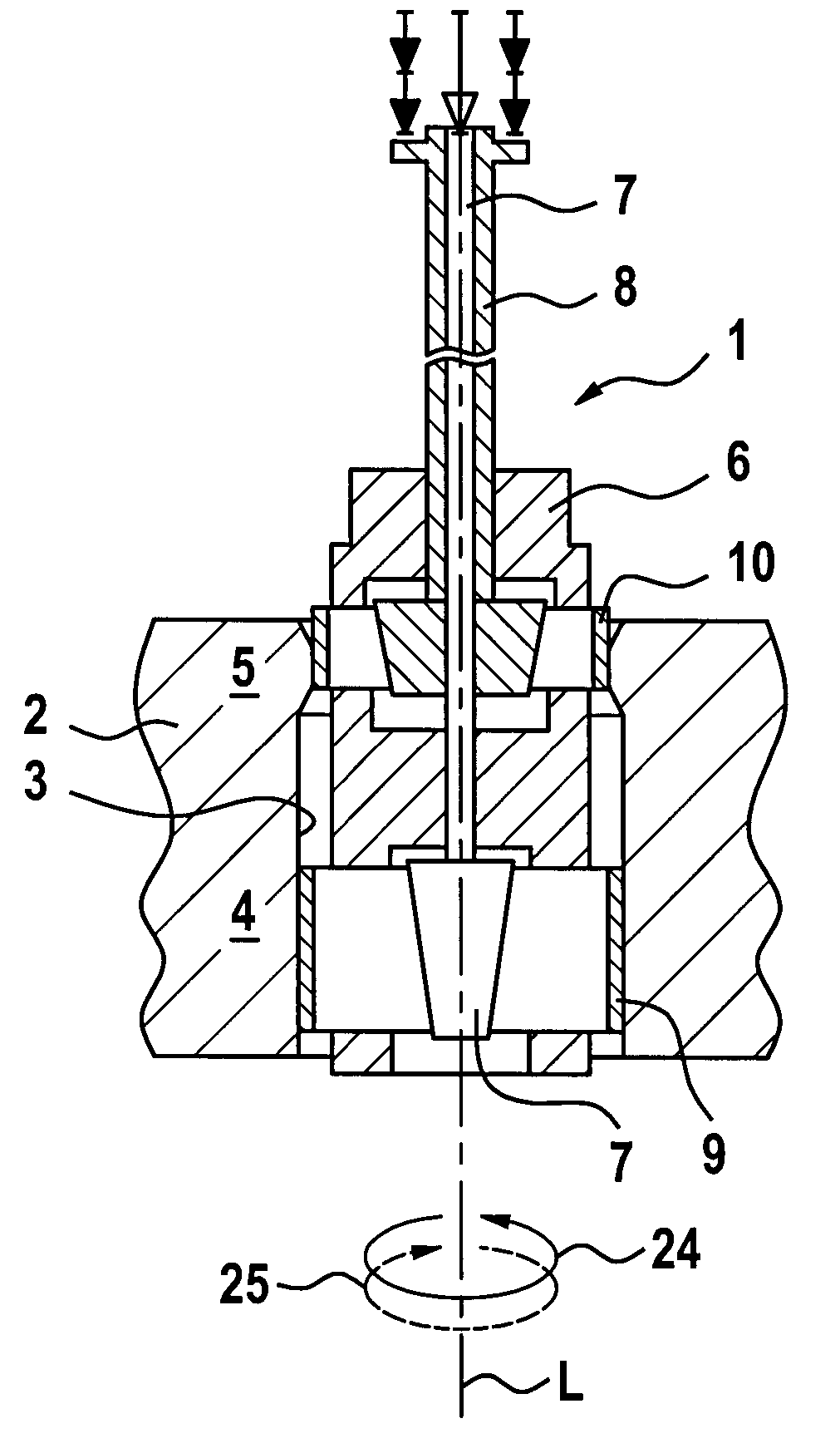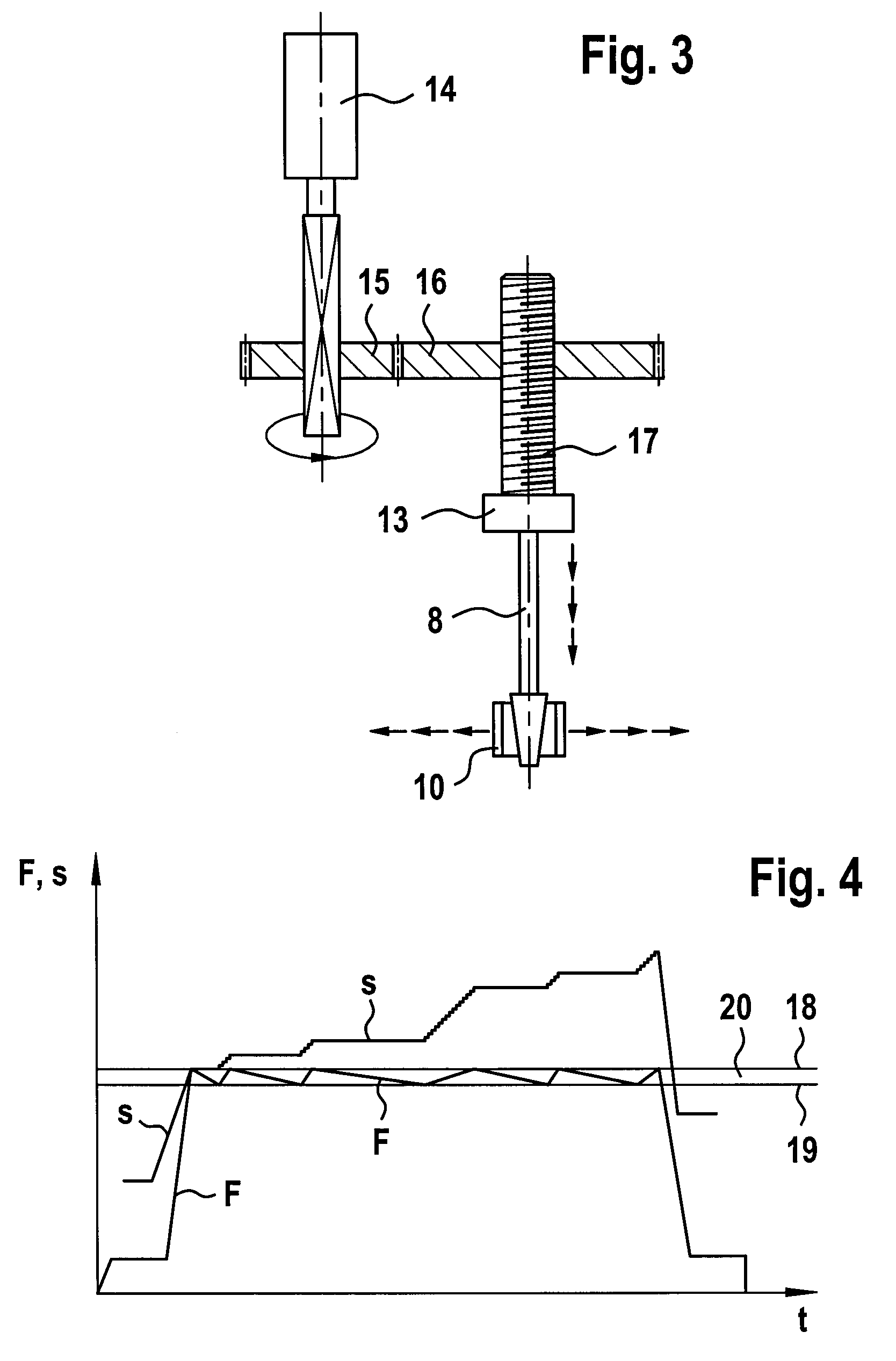Method of Honing Bores
a technology of honing bores and honing holes, which is applied in the field of honing bore methods, can solve the problems of low efficiency, low efficiency, and high cost of engine block manufacture and assembly, and achieve the effect of improving the efficiency of honing process and reducing the cost of production and assembly
- Summary
- Abstract
- Description
- Claims
- Application Information
AI Technical Summary
Benefits of technology
Problems solved by technology
Method used
Image
Examples
Embodiment Construction
[0019]FIG. 1 shows a longitudinal section of a honing tool 1 which is suitable for coaxial honing. The honing tool 1 is positioned in a bore 3 of a workpiece 2 wherein the workpiece 2, for example, is the crank case of an internal combustion engine. The bore 3 comprises a section 4 that is not hardened and a hardened section 5, wherein the hardened section 5 is provided at the upper end of the bore 3, as shown in FIG. 1. The hardened section 5 can be produced by induction hardening, for example. The honing tool 1 comprises a tool head 6 with radially expandable honing stones 10 and radially expandable guides 9. The guides 9 are supported on the bore wall within the section 4 that is not hardened, while the honing stones 10 rest against the wall in the hardened section at a predetermined force load. A first advancing device 7 for the guides 9 and a second advancing device 8 for the honing stones 10 are provided. The second advancing device 8 is a force-guided electro-mechanical step ...
PUM
| Property | Measurement | Unit |
|---|---|---|
| hardness | aaaaa | aaaaa |
| thickness | aaaaa | aaaaa |
| force | aaaaa | aaaaa |
Abstract
Description
Claims
Application Information
 Login to View More
Login to View More - R&D
- Intellectual Property
- Life Sciences
- Materials
- Tech Scout
- Unparalleled Data Quality
- Higher Quality Content
- 60% Fewer Hallucinations
Browse by: Latest US Patents, China's latest patents, Technical Efficacy Thesaurus, Application Domain, Technology Topic, Popular Technical Reports.
© 2025 PatSnap. All rights reserved.Legal|Privacy policy|Modern Slavery Act Transparency Statement|Sitemap|About US| Contact US: help@patsnap.com



